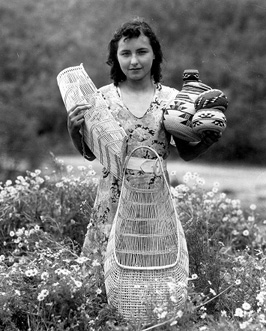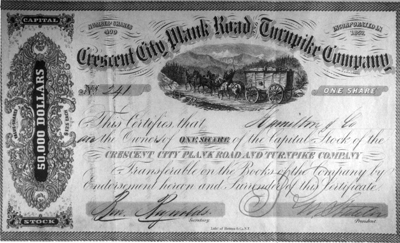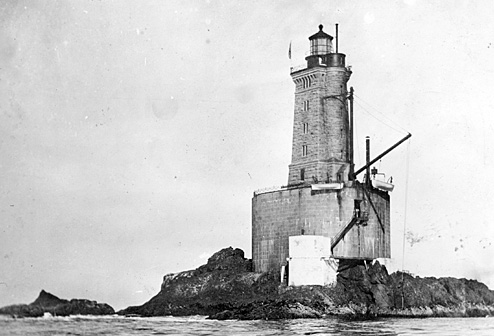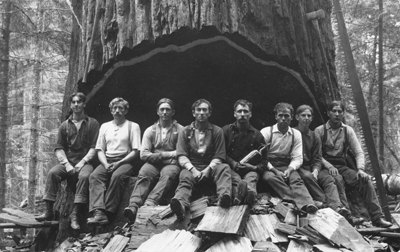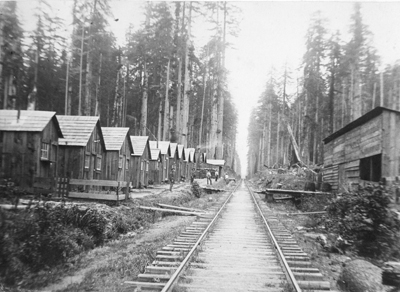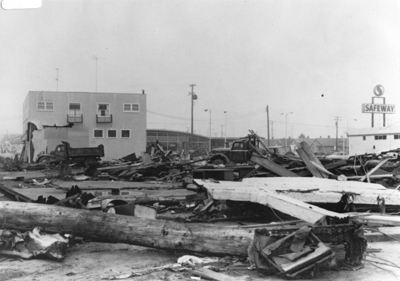History of Crescent City and Del Norte CountyPhotos on this page courtesy of the Del Norte County Historical Society. Native American SettlementPrior to the arrival of European settlers, two cultural groups occupied what is now Del Norte County: the Tolowa and the Yurok. Tolowa territory covered the northern part of the county, and Yurok the southern part. Although the Tolowa are not a federally recognized tribe, today they are among the residents of the Smith River Rancheria, located near the mouth of the Smith River.
European SettlementThe first Europeans to see Del Norte County were most likely Spanish who had arrived by ship in the 17th and 18th centuries. The first American to explore the country overland was Jedediah Strong Smith, for whom the Smith River is named. In 1828, Smith and his party of trappers traded with Native Americans, came upon Lake Earl, and camped at Crescent City. In 1848, Major Pierson B. Reading discovered gold on the Trinity River, and by 1850, northwestern California was teeming with miners. The town of Crescent City was established in 1853 by J. F. Wendell, who was issued a land warrant for 230 acres. Crescent City became a bustling shipping and trade center, catering to and supplying the miners. Gold discoveries in the immediate vicinity of Crescent City and on the south fork of the Smith River fueled the boom. During this period, residents and miners began requesting more transportation routes. The first “road” in Del Norte County, the Kelsey Trail from Crescent City to Yreka, was opened in 1855. To facilitate the use of Crescent Bay as a harbor, the Battery Point Lighthouse was erected in 1856. It survived the 1964 tsunami and is currently open to the public. In 1857, the Crescent City & Yreka Plank & Turnpike Company began construction on a plank road between Crescent City and Waldo, Oregon (Sailor’s Diggings); it was completed in 1858.
By the late 1860s, however, a decline in the production of local mines and the opening of more promising gold fields elsewhere, drove all but a handful of miners from the area. LighthousesThe waters near Crescent City are treacherous as evidenced by shipwrecks early in the towns history. In 1850, the Paragon sunk followed by the Tarquin 1851. Coupled with the fact that coastal travel was necessary for the survival of the region the Battery Point Lighthouse was built in 1856. It is open to the public during the summer and managed by the Del Norte Historical Society. It is registered as a California Historical Landmark. In 1865, the paddle steamer Brother Jonathan struck an uncharted reef just off of Point St. George near Crescent City. Two hundred forty-four were lost and only nineteen survived. The sinking of the Jonathan and other accidents resulted in the construction of the St. George Reef Lighthouse in 1892. The lighthouse sits on a reef six miles offshore. Supplies were brought in by boat and docking with the lighthouse was treacherous. The lighthouse is on the National Register of Historic Places as is the Brother Jonathan shipwreck site.
Timber IndustryThe timber industry has historically played a large role in Crescent City’s and Del Norte County’s economy. This dates back to the 1850s, when the area experienced a boom in settlement as a result of lumbering activity that followed the mining industry and the need to supply lumber for mining and housing purposes, not just in the county, but throughout California’s mining communities. Locally-produced lumber was shipped to Crescent City for reshipment to San Francisco. The northern California timber industry peaked in the post World War II years (1945 to 1950) as a result of strong housing and construction demand and an abundance of raw materials. Shortly after 1950, the number of mills began to drop as the industry transitioned from one based on harvesting old growth timber to one that relies on younger, smaller, less valuable second growth that is relatively more expensive to grow.
TsunamiThe topography of the sea floor near Crescent City has the effect of focusing tsunamis. On, March 27, 1964 the Good Friday Earthquake (measuring 9.2 on the Richter scale) set in motion a tsunami down the west coast of the U.S. Crescent City was struck with four waves destroying hundreds of buildings (including most of the downtown area) and killing 12 people.
On March 11, 2011 a tsunami generated by the 9.0 scale Tohoku earthquake near Japan severely damaged the harbor and claimed one victim. |
